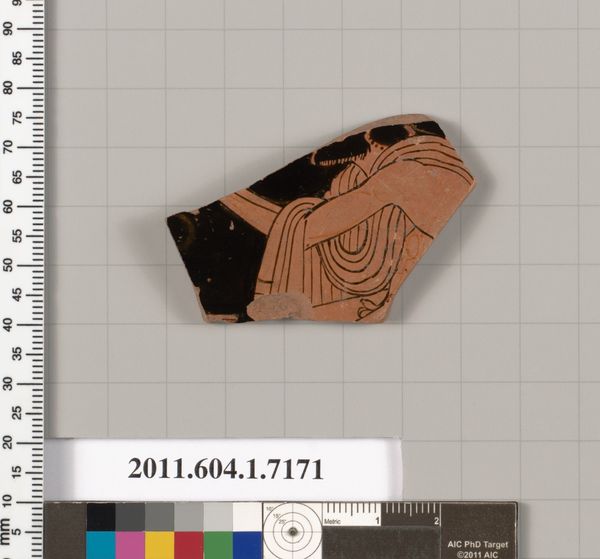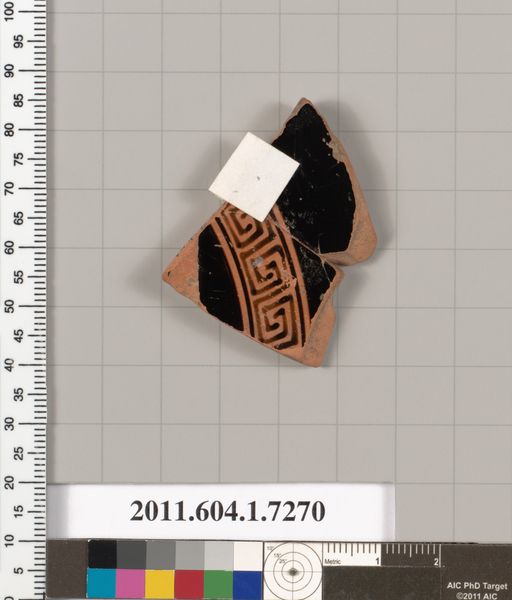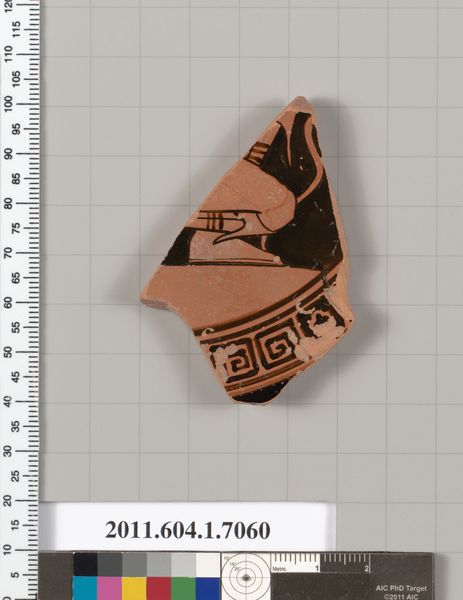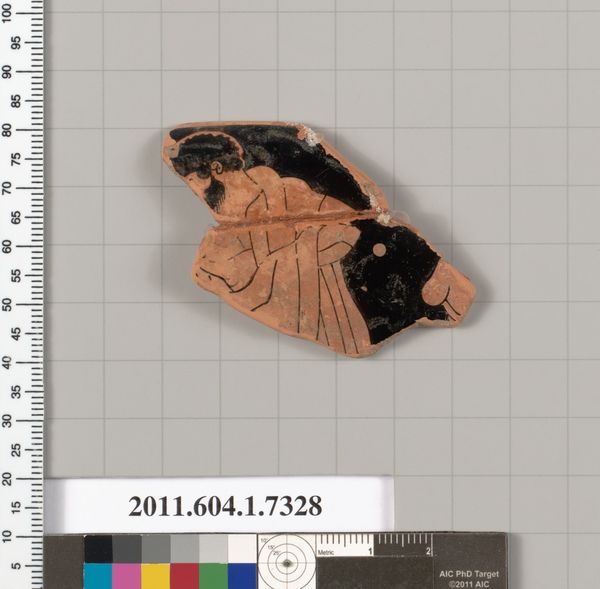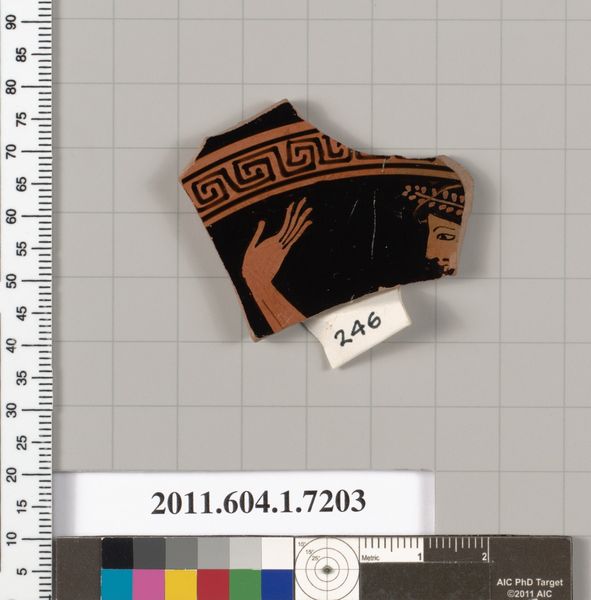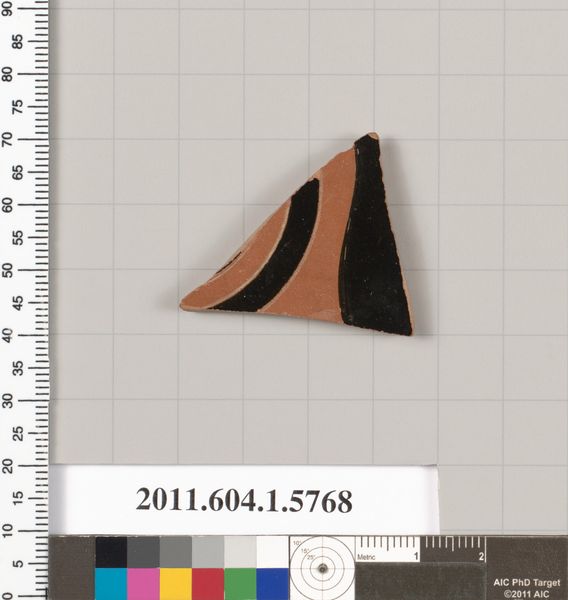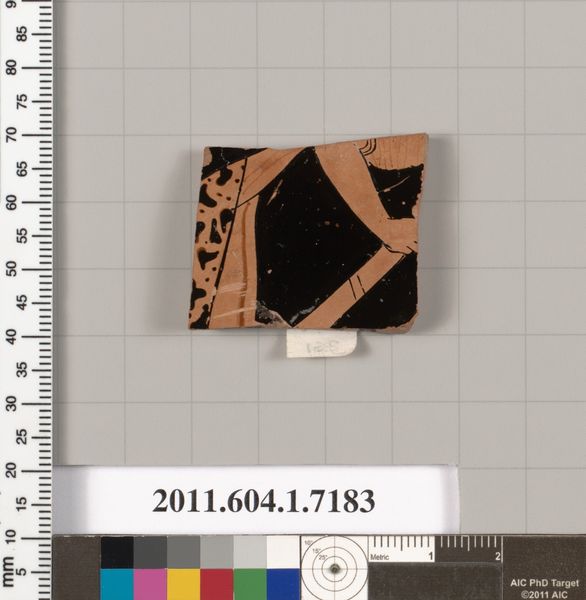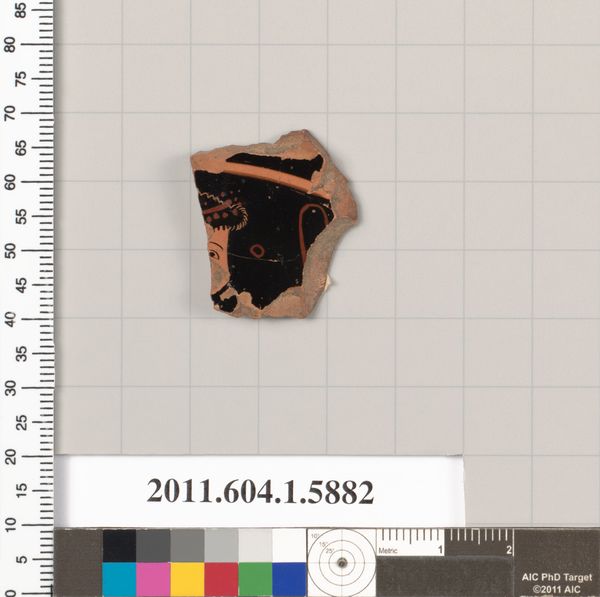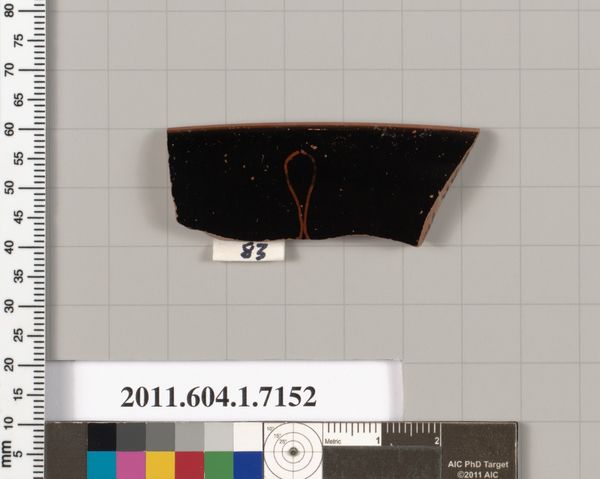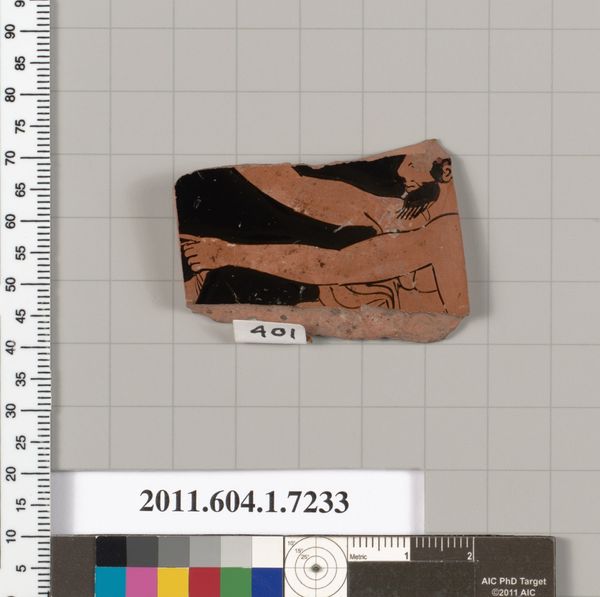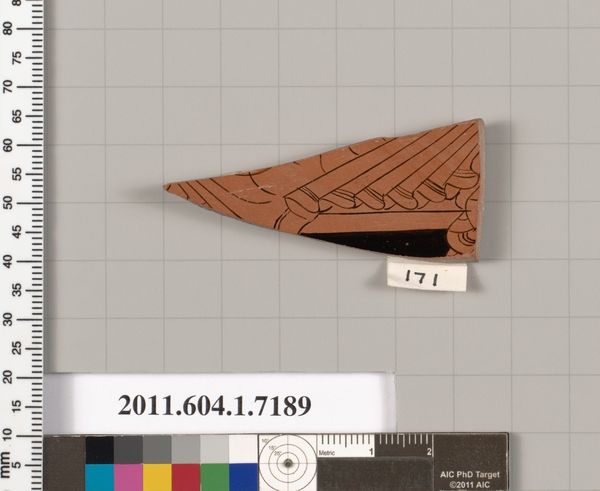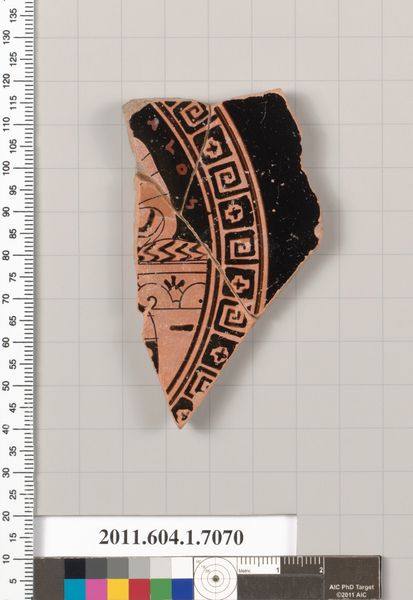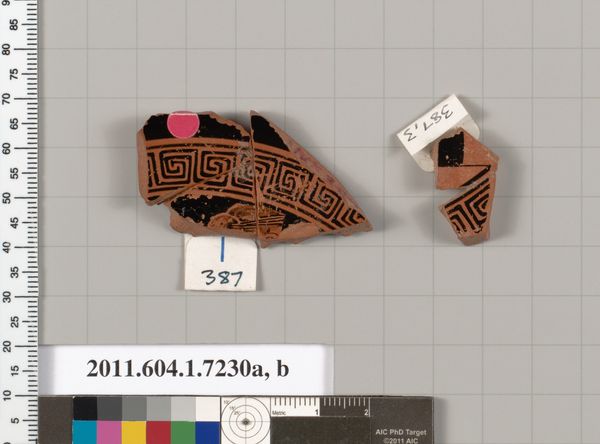
drawing, ceramic
#
drawing
#
greek-and-roman-art
#
ceramic
#
vase
#
figuration
#
ancient-mediterranean
#
arch
Copyright: Public Domain
Curator: This small, yet compelling, fragment once belonged to a kylix, an ancient Greek drinking cup crafted around 530 BC. We believe it’s the work of Makron, a renowned vase painter of the time, now residing here at the Metropolitan Museum. Editor: It feels incredibly intimate, even incomplete. The stark contrast between the black figures and the terracotta creates this immediate sense of drama. Like a tiny glimpse into another world, reduced to just a piece of the story. Curator: Exactly. What you see in that dramatic contrast is achieved through the red-figure technique. The figures are reserved in the natural red of the clay, while the background is painted black. And notice the meander pattern at the top—a continuous line motif common in Greek art, almost acting as a frame. Editor: That meander almost contains it. And I'm immediately drawn to what's left of the figures. There’s a sense of motion. It's a frozen moment from, I assume, a much larger narrative. How were pieces like this perceived in their time, culturally speaking? Curator: The scenes depicted on kylixes often related to daily life, mythology, or symposia—the gatherings for drinking and intellectual discourse among elite Greek men. Images reinforced social values and also sparked conversation, much like art does today. This specific fragment seems to capture a moment of possibly ritual activity, though context is partially lost due to its incompleteness. We interpret its meaning by piecing together cultural context. Editor: It's striking how such a small, fragmented piece can hold so much weight, connecting us to ancient rituals and ways of life. The craftsmanship alone speaks volumes. And despite its broken state, the emotions it evokes are still so palpable. It does prompt introspection regarding themes that have outlived even empires. Curator: Precisely. It speaks to our enduring human fascination with narrative and ritual, even across millennia. And even within fragments, our stories carry themselves across generations.
Comments
No comments
Be the first to comment and join the conversation on the ultimate creative platform.
